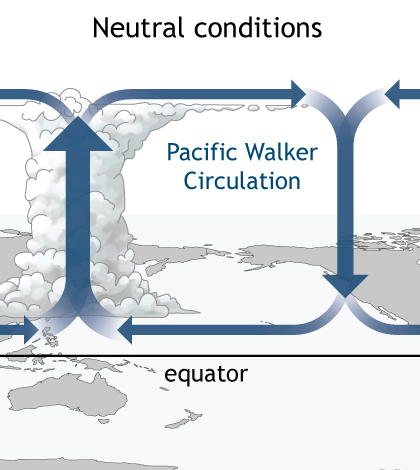Tropical Pacific Circulation Impacted By Climate Change, Causing Rainfall Changes

Walker Circulation. (Credit: NOAA)
The Walker circulation, a well-known atmospheric land flow and distribution of heat in the tropical Pacific that affects rainfall patterns, has been undergoing shifting and weakening for the past century. These alterations have been occurring due to increasing greenhouse gas emissions, according to a release from the University of Miami Rosenstiel School of Marine and Atmospheric Science.
Researchers discovered that changes in the Walker circulation could be predicted using climate models in which cloud cover data are used as a substitute for atmospheric wind velocity. Atmospheric wind velocity can’t be measured directly, but cloud cover data was gathered using visual observations from ship decks about 50 years in the past. It was simply an old data set used in a new way.
When used in the climate model, the cloud cover information can be used to estimate the distribution and intensity of the Walker circulation. The current model suggests that greenhouse gas emissions will cause increases of rainfall over the central Pacific Ocean, but decreases for Indonesia and the western Pacific.
Top image: Walker Circulation. (Credit: NOAA)





0 comments